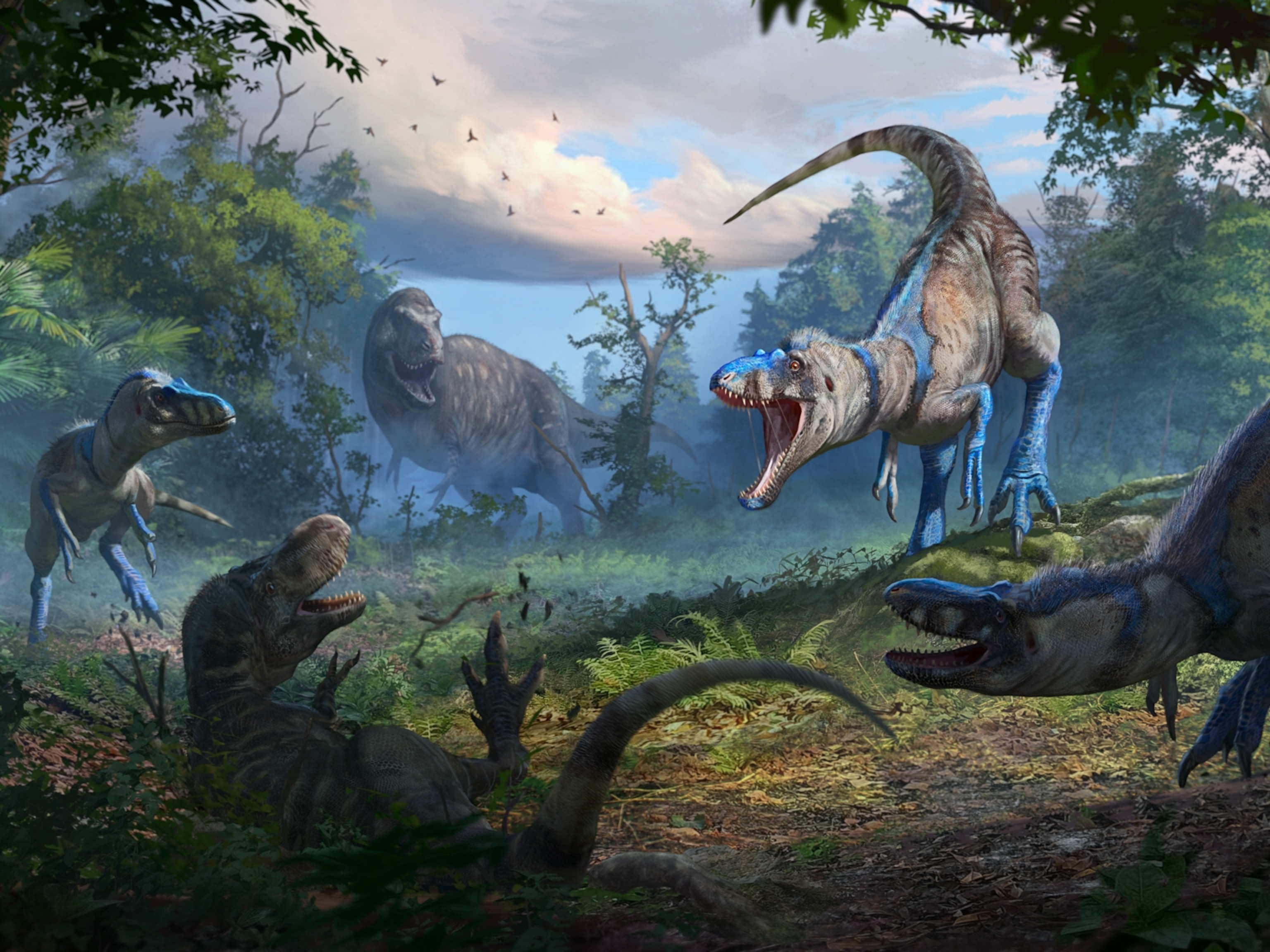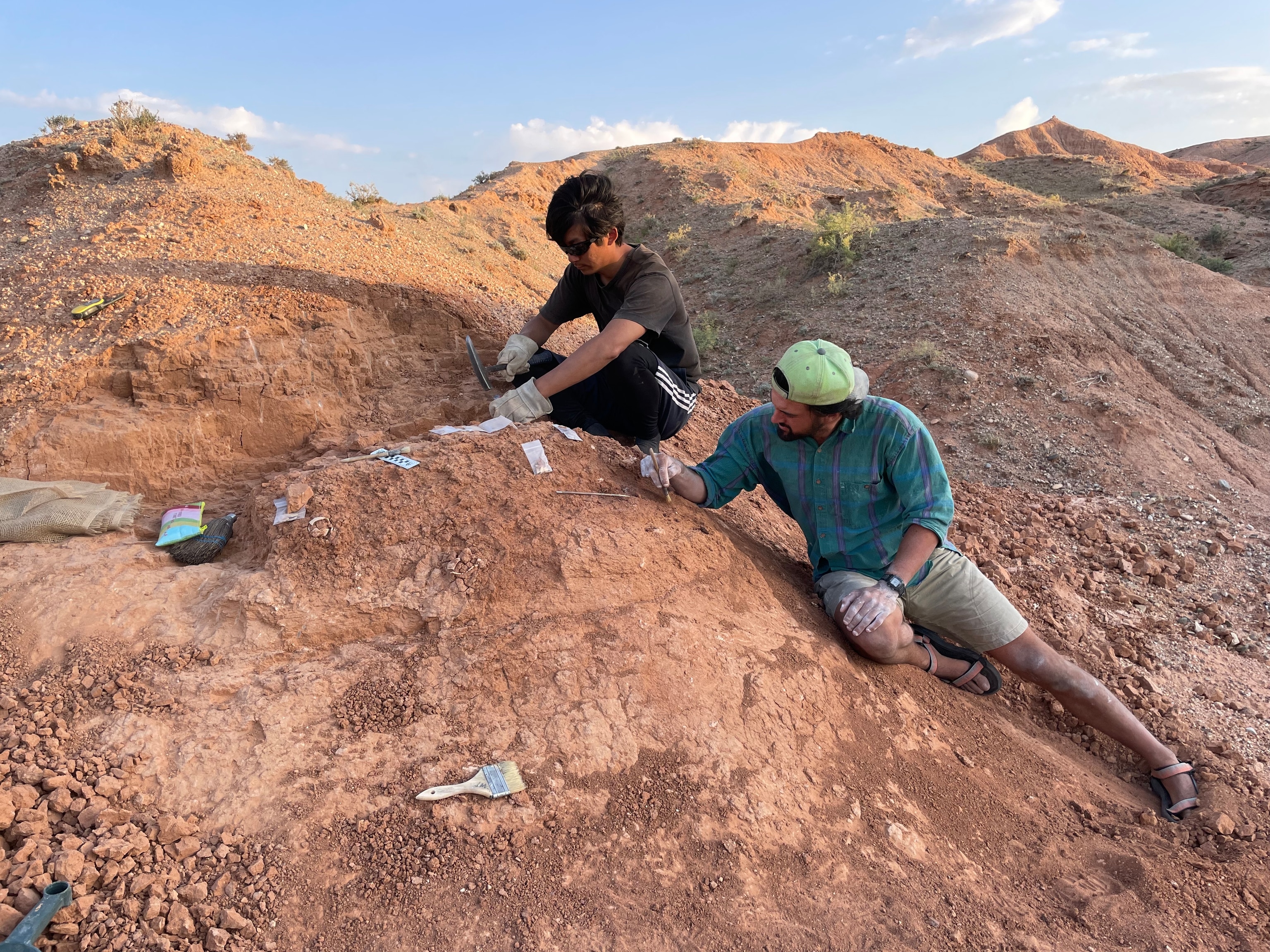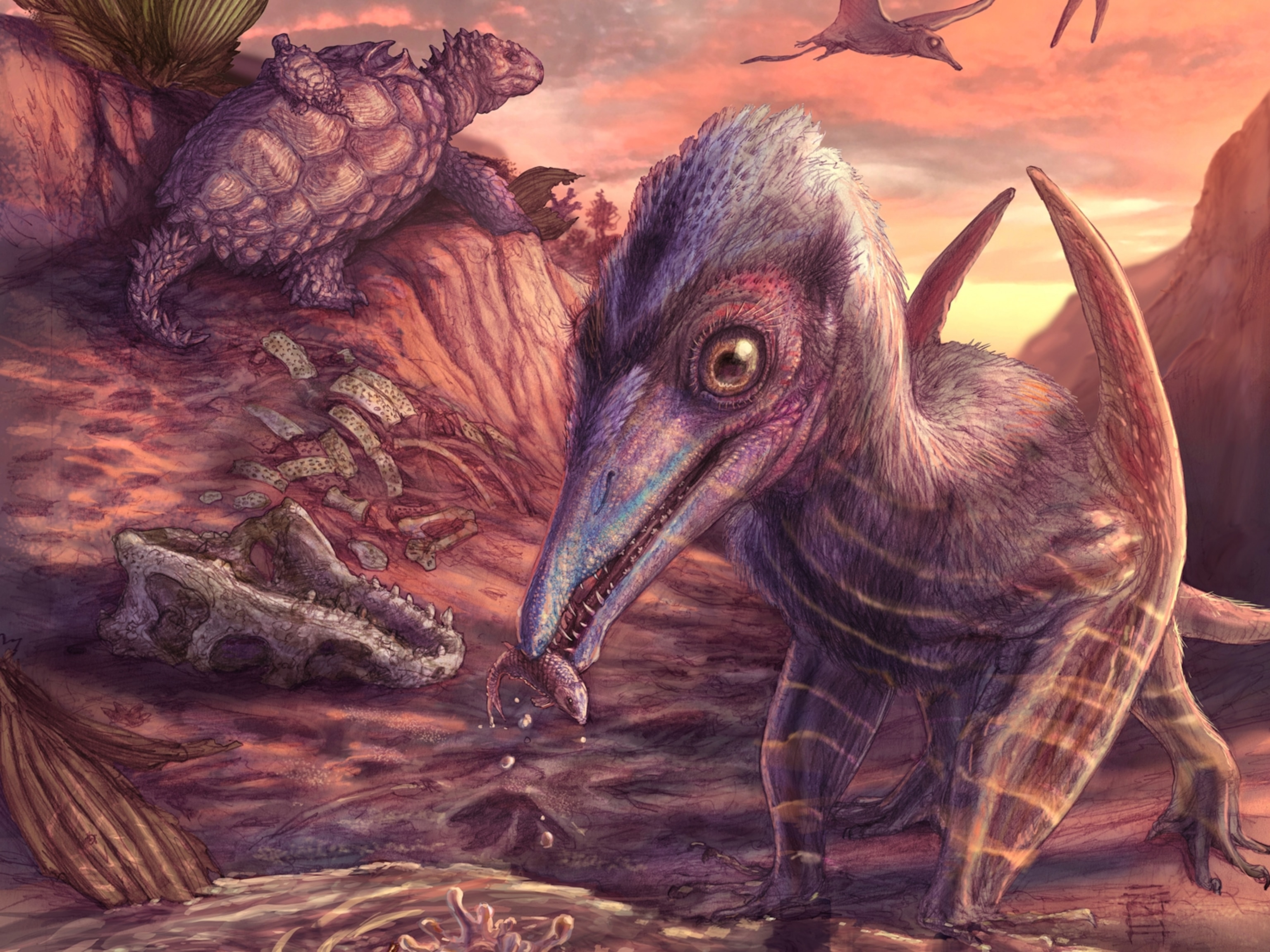Dome-headed dinosaurs are rare. Scientists just found the most remarkable one yet.
When did these blockhead dinosaurs get their domes? A new fossil is “the specimen we have all been waiting for.”
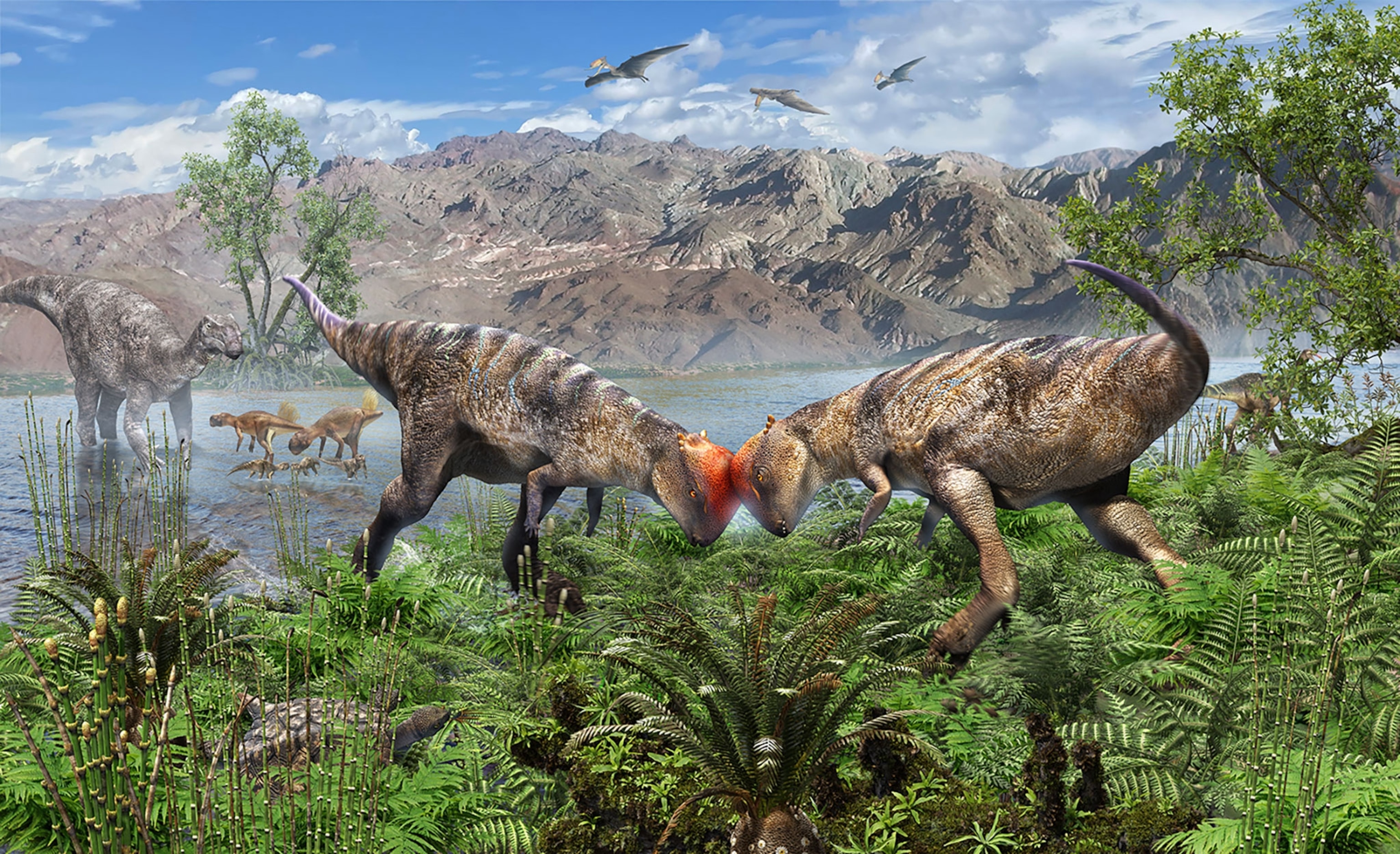
Dome-headed dinosaurs are hard to find. Known as pachycephalosaurs to paleontologists, these Cretaceous herbivores had skulls with thickened, rounded roofs. The purpose of their notorious noggins remains a mystery, pieced together from fragments found at a variety of fossil sites in North America and Asia. But now paleontologists have uncovered the oldest pachycephalosaur yet known, and the most complete fossil of this enigmatic dinosaur family.
Named Zavacephale rinpoche in today’s issue of the journal Nature, the roughly 108-million-year-old herbivore found in Mongolia was a pipsqueak compared to its later relatives. While the group’s namesake, Pachycephalosaurus, could stretch more than 15 feet long and weigh over 600 pounds, Zavacephale was only about three feet long and weighed about 20 pounds. Despite its smaller stature, the fossil’s age and completeness are a big deal to researchers.
“For those of us who study the dome-headed dinosaurs, Zavacephale is the specimen we have all been waiting for,” says Royal Ontario Museum paleontologist David Evans, who was not involved in the study.
(Out With the Old Stegosaurus)

A rare look at a dinosaur’s punk phase
Just like many of its larger and geologically younger relatives, Zavacephale had a thick, domed skull. The new specimen also includes many other elements from the limbs, shoulders, hips, and a tail that was reinforced with noodle-like tendons that had turned to bone. Though paleontologists have recorded the dinosaurs since the 1940s, the finger bones of Zavacephale are the first hand digits reported for any pachycephalosaur.
(See the tiniest pachycephalosaur ever discovered.)
One reason for the relative rarity of pachycephalosaur skeletal parts beyond their skulls is just how sturdy their domes were. “If you want to imagine a pachycephalosaur skull, think of half a bowling ball supported by tooth picks,” says North Carolina Museum of Natural Sciences paleontologist and study author Lindsay Zanno. “Now imagine dropping that in a river. What do you think will survive the journey? Most likely just the dome,” she notes, adding that many pachycephalosaurs were small animals with fragile skeletons.
Now, thanks to Zavacephale, experts have a much clearer look at what the earliest members of the group were like and how their unique body plan came together. “Having such a complete skeleton behind the skull of this early pachycephalosaur is a rare treasure trove for understanding how their bizarre skeletons came to be,” Evans says.
The fossilized limb bones in this Zavacephale specimen allowed Zanno, who is also a National Geographic Explorer, and her colleagues to investigate the individual dinosaur’s biological age. Paleontologists often look to the microscopic structure of dinosaur limb bones, in addition to other clues, to estimate how old the animal was when they perished.
The dinosaur was immature and still growing when it died, meaning that the Zavacephale grew its domed head before reaching full adult body size. The pattern fits what paleontologists have found in other species: Dinosaurs went through their flashy punk phase in adolescence. Many dinosaur species evolved elaborate crests, horns, and other social ornaments long before they reached full body size and slowed their growth.
(Why did the herbivore Triceratops look so fierce?)
The origin of domeheads
The way these dinosaurs grew their domes roughly replays the way the thickened bones evolved through evolutionary time. “When we look at how the dome of Zavacephale was constructed,” Zanno says, “we found that the evolution of the dome in pachycephalosaurs surprisingly mirrors how the dome develops as an individual pachycephalosaur grows from juvenile to adult.”
Both the completeness and ancient geologic age of Zavacephale immediately make the new dinosaur critical to understanding when, how, and where pachycephalosaurs evolved. The fossils from Mongolia are at least 14 million years older than those of the next-oldest pachycephalosaur species, Sinocephale from China. Sometime before 108 million years ago, the earliest dome-headed dinosaurs split off from their common ancestor with horned dinosaurs, flourishing in prehistoric Asia before spreading into North America.
The ancient age of Zavacephale has led Zanno and colleagues to reconsider what the earliest pachycephalosaurs were like. Up until now, paleontologists thought that the first dome-headed dinosaurs had slightly-thickened, relatively flat skull roofs, not full, thick domes. The dinosaur Wannanosaurus from China was thought to represent this early evolutionary stage, but now seems to be a juvenile individual that lived at the wrong time to inform the origins of the dome-headed dinosaurs. Zavacephale, along with related dinosaurs like Colepiocephale from Canada, indicate that pachycephalosaurs evolved a domed skull very early in their evolutionary history, an earlier start than experts expected for such a striking profile.
“Not only does it help solve the origin of the dome, this spectacular specimen will greatly help us understand the evolutionary relationships among known dome-headed dinosaur species,” Evans says. Most known pachycephalosaurs date back to the later parts of the Cretaceous, and the findings suggest that many previously-known pachycephalosaurs may need another look.
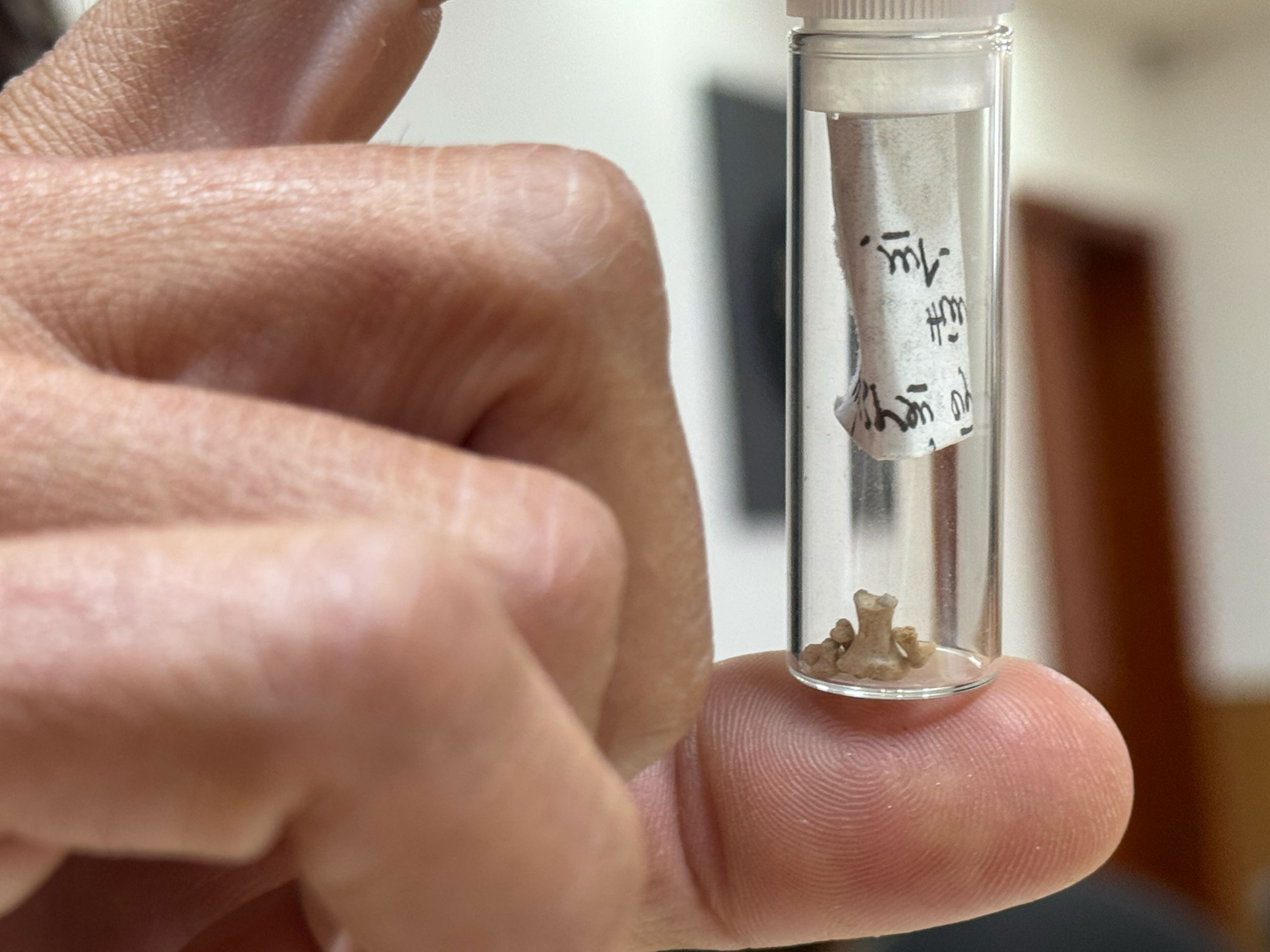

Shaking up the dome-head family tree
Determining the life stage of a dinosaur is challenging, especially when so many pachycephalosaurs are only represented by skull domes and no other skeletal parts as seen with Zavacephale. The new dinosaur, Zanno notes, “teaches us that we need to be careful about assuming that a well-developed cranial dome means a full-grown skeleton.”
Pachycephalosaurs that were assumed to be adults could actually be juvenile animals. In that vein, paleontologists have already suggested that two small, spiky dome-heads previously identified as Dracorex and Stygimoloch are actually juveniles of Pachycephalosaurus found in the same fossil formations, not separate species.
The fact that the dome grew early in the life of Zavacephale and other pachycephalosaurs hints that it was an important social feature. “This little dinosaur was still growing, yet it already had a flashy cranial dome for social interactions and signaling,” Zanno says, whether that took the form of posturing or potentially butting their heads against other Zavacephale to compete for mates or territory.
Canadian Museum of Nature paleontologist Jordan Mallon, who was not involved in the new study, sees skeletal signs of how dinosaur socializing may have changed over time: “I think what’s most exciting is just how long those hind legs are.” Later, larger pachycephalosaurs had shorter, stouter legs, he notes, perhaps correlated with head-butting behavior that would require more stable footing.
The exact behaviors tied to the domes of these dinosaurs remain debated and mysterious, difficult to piece together more than 66 million years after the pachycephalosaurs went extinct. Whatever their function, though, the domes distinguished these little dinosaurs for tens of millions of years, Cretaceous fashion statements that evolved in bone.




